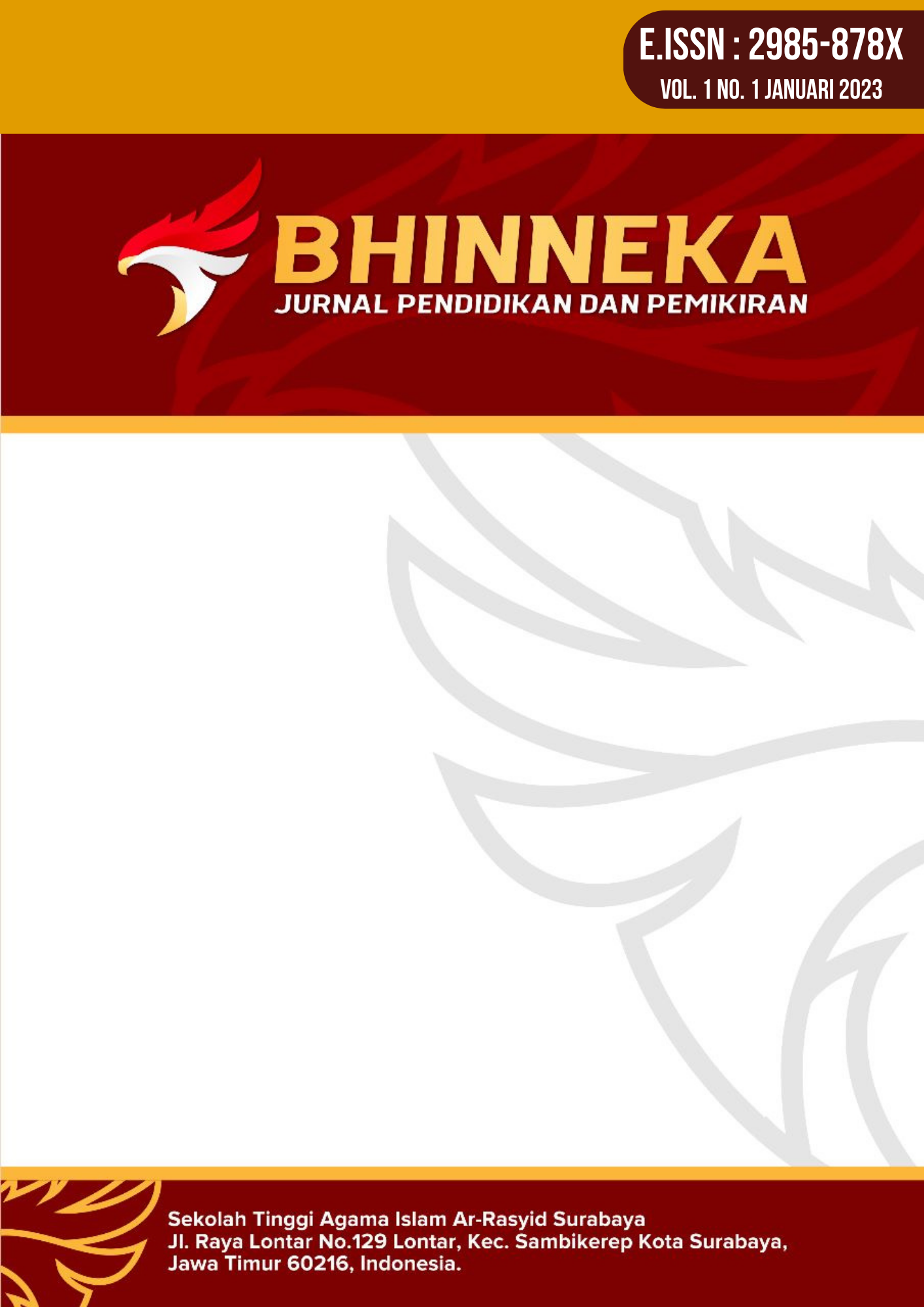Improving Indonesian Language Learning Achievement Regarding The Ability To Understand Explanation Text Using The Make A Match Method Of Class VI Students In MI Ma'arif Klangon Kalibawang Regency Kulonprogo Lessons
Keywords:
PTK, Indonesian correctly, read and writeAbstract
Indonesian is the main subject at school which is used to hone students' skills such as speaking, listening, listening and writing skills. Students at school are required to be able to use Indonesian correctly, read and write. This research uses a Classroom Action Research (PTK) design. Classroom Action Research is research that examines student learning activities by providing an action that is deliberately created (Suharsimi Arikunto et al, 2006: The activity of observing an object to obtain data that is useful for the common good. The implementation of PTK actions is carried out over several periods or cycle. 2. This research shows that student learning outcomes have increased after taking action. The percentage of students who have not completed has decreased from cycle 1 to cycle 2 (from 63.1% to 0%. The percentage of students who have completed has increased from cycle 1 to cycle 2 (from 37% to 100%). The success indicator for this PTK is that this PTK is said to be successful if the percentage of students whose learning outcomes have been completed reaches at least 85%. The table shows that the percentage of students whose grades have been completed has reached 100 %, then the PTK has been successful
References
Abduh, I. F., & Taqwa, A. (2022). Rote Learning Methods on Islamic Education Subject in Relation with students’ Learning Motivation. Atthulab: Islamic Religion Teaching and Learning Journal, 7(1), 14–26. https://doi.org/10.15575/ath.v7i1.13621
Abdullah, S. M. (2019). Social Cognitive Theory: A Bandura Thought Review published in 1982-2012. PSIKODIMENSIA, 18(1), 85. https://doi.org/10.24167/psidim.v18i1.1708
Albelda-Esteban, B. (2019). Impact of school libraries on the reading literacy acquisition at primary school in spain: An approach based on PIRLS 2016. Revista de Educacion, 2019(384), 11–39. https://doi.org/10.4438/1988-592X-RE-2019-384-408
Alimni, A., Amin, A., Kurniawan, D. A., Perdana, R., Pratama, W. A., & Triani, E. (2022). The Relationship between Religious Attitudes and Perseverance in Learning in Islamic Religious Education Lessons in Junior High Schools. Jurnal Pendidikan Agama Islam, 19(1), 93–110. https://doi.org/10.14421/jpai.2022.191-08
Aprianti, W., Muslihin, H. Y., & Elan, E. (2021). Applying discipline character: Parents vs. Teachers. Journal of Early Childhood Care and Education, 4(1), 22–32. https://doi.org/10.26555/jecce.v4i1.4004
Permatasari, P., Wijonarko, W., & Handayanto, A. (2017). PENGARUH MODEL PEMBELAJARAN MAKE A MATCH DENGAN MEDIA KARTU SOAL DAN MODEL PEMBELAJARAN ROTATING TRIO EXCHANGE DENGAN MEDIA MODUL PEMBELAJARAN TERHADAP HASIL BELAJAR MATEMATIKA PADA POKOK BAHASAN MATRIKS KELAS X SEMESTER II SMK NEGERI 1 DEMAK TAHUN AJARAN 2012/2013. AKSIOMA, 7(2), 56–56. https://doi.org/10.26877/aks.v7i2.1419
Rahma, A., & Haviz, M. (2022). Implementation of Cooperative Learning Model with Make A Match Type on Students Learning Outcomes in Elementary School. Journal of Islamic Education Students (JIES), 2(2), 58–58. https://doi.org/10.31958/jies.v2i2.5593
Sutiah, S. (2020). Fuzzy topsis optimization on expert systems for core competency detection and Islamic religious education student learning achievement at Perguruan Tinggi Keagamaan Islam Negeri (PTKIN). IOP Conference Series: Materials Science and Engineering, 732(1). https://doi.org/10.1088/1757-899X/732/1/012040
Downloads
Published
How to Cite
Issue
Section
License
Copyright (c) 2023 BHINNEKA: Jurnal Pendidikan dan Pemikiran

This work is licensed under a Creative Commons Attribution-ShareAlike 4.0 International License.






